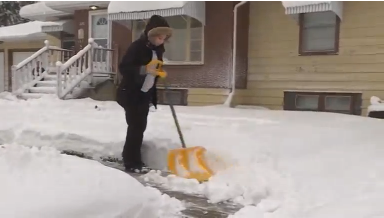
NORTH DAKOTA, United States (Reuters) — The first widespread winter storm to sweep the Dakotas this season unleashed heavy snow and howling winds from the Black Hills to Bismarck on Tuesday (November 29), creating whiteout conditions and forcing the closure of a stretch of Interstate 90.
The late-November storm caps an unusually warm and mild weather month in most of North and South Dakota, two states in the upper Midwest that normally see multiple snowfalls by Thanksgiving Day, according to National Weather Service (NWS) meteorologists.
An earlier storm struck a corner of the eastern Dakotas and western Minnesota nearly two weeks ago, but that system was less powerful and smaller in scale by comparison to Tuesday’s blast of snow and gale-force winds.
No-travel advisories were posted for wide sections of both North and South Dakota, state officials said.
Among areas hardest-hit was a swath of southwestern South Dakota around the Black Hills, where severe blizzard conditions prompted authorities to close a 45-mile stretch of I-90 between the town of Spearfish and
Rapid City, the state’s second-largest urban area. The highway was later reopened between Rapid City and Piedmont.
No serious injuries were reported, but conditions grew so dire that snowplow operations were suspended in some places.
Sustained winds of 30 to 40 miles per hour were common across the region, with gusts of 50 to 60 mph, according to the NWS. Wind-chill values were expected to plunge into the teens to 10-degrees below zero Fahrenheit.
Weather also was a factor in authorities’ ongoing efforts to expel thousands of Native American and environmental activists camped on federal property to protest an oil pipeline project near the Standing Rock Sioux reservation in North Dakota.
Federal, state and local officials pressed the demonstrators to leave the camp as the storm bore down on the region, citing human safety hazards posed by harsh winter conditions. But protest leaders have said they intend to stand their ground.
Overall, winter storm warnings or advisories remained in effect for most of the western two-thirds of the Dakotas, extending into eastern Montana and northeastern Wyoming.







